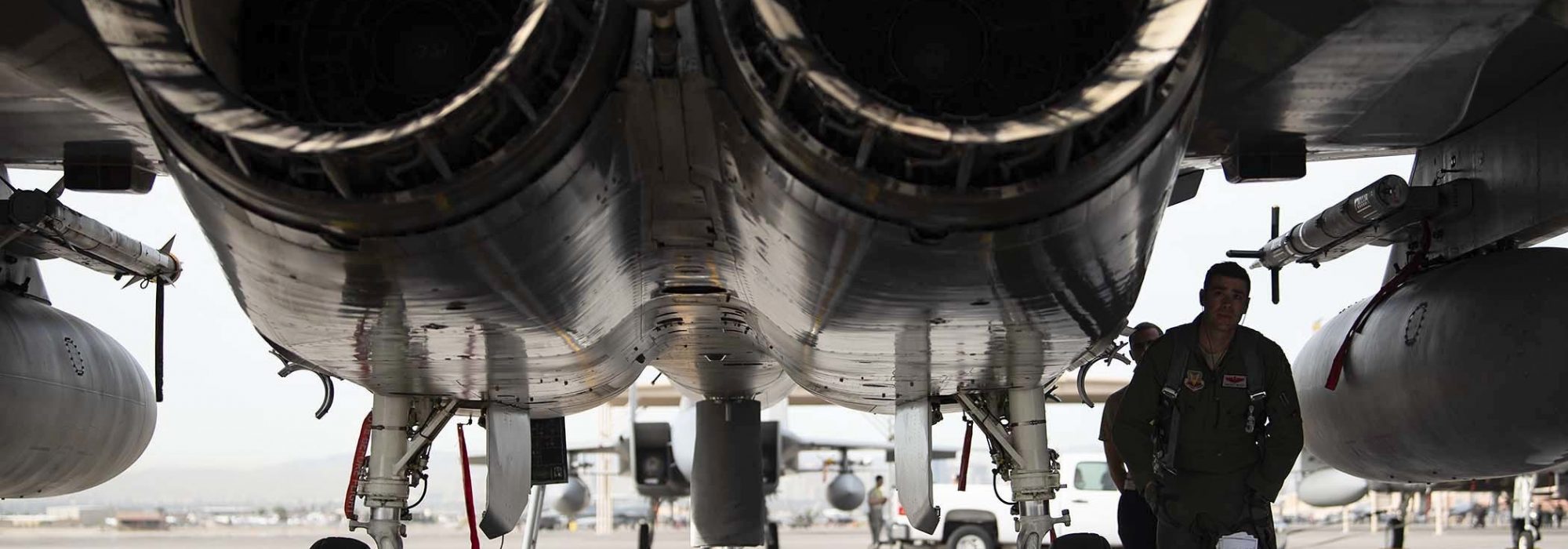The Air Force and Navy are both experiencing declining aircraft availability, a long-term downward trend exemplified by flying fewer hours per aircraft, according to a new report from the Congressional Budget Office (CBO). The data suggests readiness is worse than what the Defense Department reports.
The Pentagon’s stated aircraft availability is higher because the Defense Department counts some aircraft as ready for action even if they are torn down for maintenance at their owning unit or are in storage, the audit agency said. The Air Force measures “availability” as “mission capable” rates, metrics that have changed in recent years.
The CBO provided only broad graphs and not specific numbers, but its data show availability for USAF aircraft declining from about 60 percent in 2000 to less than 45 percent in 2020.
Flying hours for USAF aircraft declined from an average of about 300 per year to only about 230; fighter/attack aircraft averaged 200 hours per year in 2000, but only 125 hours on average in 2020. Both availability and use peaked in 2008.
For a more granular look, the CBO examined the F-15C/D and F-16C/D jets, finding availability declined from just under 70 percent in 2000 to about 55 percent for the F-16 and 45 percent for the F-15s in 2020. Flying hours fell from about 260 in 2000 to about 150 for the F-16 and 110 for the F-15 by 2020.
For rotary and tilt-rotor aircraft, USAF saw availability rates at around 60 percent through 2012, after which rates declined to about 55 percent through 2016, followed by a modest recovery to about 58 percent.
The Air Force saw a bump in availability of all aircraft due to the COVID-19 pandemic, CBO reported, with availability rising “from 49 percent in February 2020 to a peak of 54 percent in April 2020,” before returning to 49 percent in September 2020.
CBO compared its calculations for F-15C availability to the Air Force’s to illustrate its conclusion that the Pentagon’s data is misleading. Citing data from 2019, CBO said, “The Air Force had 304 F-15Cs,” with an average of 121 mission capable “and possessed by operators” at any given time. But it found that 110 airplanes “coded as mission capable … could not be flown on combat or training missions.” The reason: “17 were undergoing depot-level maintenance and 93 were in storage.”
By DOD’s counting, “67 percent of F-15Cs were available” in 2019, while CBO concluded the actual percent was closer to 40 percent. The total number of aircraft was the same, with the difference in how one counts those planes not in service. CBO said that its method is a more realistic way to assess the true availability of aircraft for training or combat.
The Navy’s decline in availability of the 2000 to 2020 period was more pronounced than the Air Force, but the Navy flew its aircraft more per tail than USAF did over the same period. The availability of the F/A-18C/D has fallen more than any other fighter that CBO looked at.


